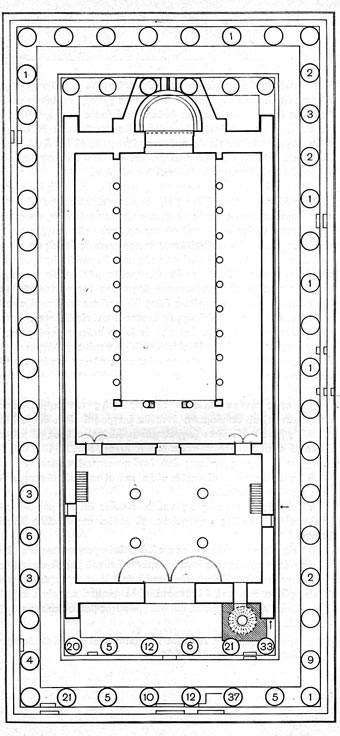
 |
 |
 |
 |
Type:
Date: middle of the 6th century
Description:
Justinian’s edict in 529 A.D. marked the beginning of the conversion of ancient temples to Christian churches. Thus, the biggest temple of classical Athens, symbol of its glory and its Golden Age, the Parthenon, was converted into a Christian church. The veneration of the pagan Virgin gave its place to the Christian Virgin Mary, Theotokos, and the church was named after her (Panagia Athiniotissa). This took place in the middle of the 6th century with certain architectural alterations such as the addition of an apse in the east. Moreover, the entrance was moved to the western side of the church. Three gates opened in the wall that separated the church from the opisthodomos converted it into a narthex of the Christian church. Thus, the Parthenon was converted into a three-aisled basilica with a prestige spreading through Greece and the entire empire, since it was a veneration place. This was also the church where Basil II celebrated his victory against the Bulgars.
The church is mentioned in hagiological sources and imperial documents. Furthermore, more recent travelers refer to its glorious mosaics (Reinhold Lubenau, 1588-89). Only 118 tesserae were preserved from the mosaic of the Virgin Mary, which were transferred to the British Museum in 1848. Nowadays, only fragments of the initial plan of the representations on marble are preserved in the exonarthex. The hundreds graffities are very important, the so-called Stone Chronic because of all the historical information provided to the scholar. Names of generals, bishops, archbishops, but also records of deaths, names, titles and jobs accompanying these names, prayers and invocations or strange symbolic representations (ships, strange sketches) are inscribed in the columns of the Christian church filling in the gaps in the sources of the early Christian and Byzantine era.
Panselinou N., Byzantine Athens, Athens 2004, p. 33-36.







